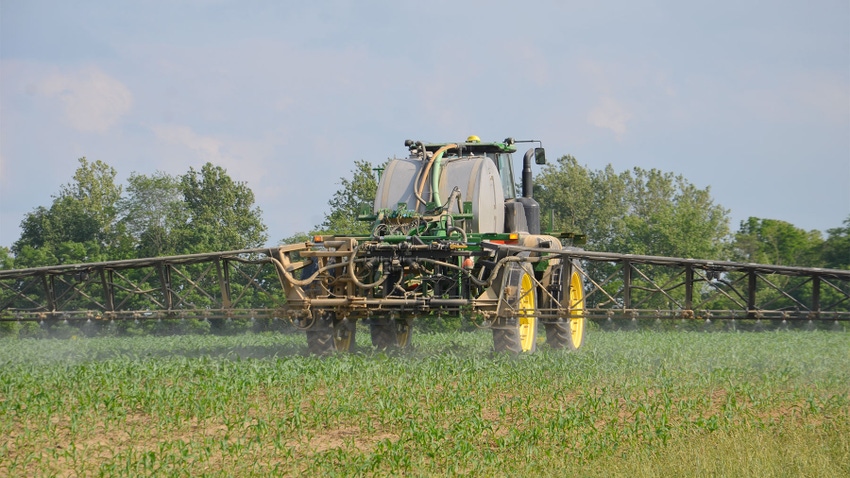
Do you know the chemistry behind the brand names of postemergence herbicides you will pour into your tank to spray corn? How do these products match up with the worst weeds in a field?
“These are important questions you should address before spraying,” says Bill Johnson, Purdue Extension weed control specialist. He urges farmers to consult efficacy tables that rate how well various herbicides control tough weeds. Find the tables in the 2024 Weed Control Guide prepared by Ohio State University, the University of Illinois, Purdue and the University of Missouri.
“If what you’re using is marginal for controlling one or more weeds, find other products in the tables with better ratings, and consider adding one or more to your tank to shore up weed control,” Johnson says.
Halex GT vs. Acuron GT
Halex GT and Acuron GT are two popular post corn herbicides. For many weeds, they deliver similar control, Johnson says.
“Acuron GT contains bicyclopyrone, which helps on waterhemp control,” he explains. “Many growers using Halex GT add dicamba to help pick up waterhemp. If it is past the date for spraying dicamba in Indiana, Acuron GT becomes another option.”
Here is a closer look at these two options:
Halex GT at 3.6 pints per acre. Ingredients include 1 pint of Dual II Magnum 7.68 EC, 3 ounces per acre of mesotrione 4L and 0.94 pound of glyphosate acid equivalent.
Acuron GT at 3.75 pints per acre. Ingredients include 1 pint of Dual II Magnum 7.68 EC, 3 ounces per acre of mesotrione 4L, 0.94 pound of glyphosate acid equivalent and 0.045 pound of a.i. bicyclopyrone. Note that the first three ingredients are identical to Halex GT.
Newer post corn herbicides
Here’s a closer look at the newest post corn herbicides:
Shieldex 3.33L at 1 to 1.35 ounces per acre. Each ounce contains 0.025 pound of a.i. Shieldex contains tolpyralate alone, Johnson says. It is a new active ingredient, but not a new mode of action. It falls into Group 27, HHPD inhibitors, along with Callisto, Laudis and Impact. Apply up to V6 or 20-inch corn. There is a nine-month rotational restriction to soybeans, Johnson notes. MSO is the preferred adjuvant.
Restraint 6.949L at 30 ounces per acre. This is another herbicide with tolpyralate. It is 0.84 ounce of Shieldex 3.33L plus 1.5 pounds per acre of a.i. acetochlor. Its strengths are residual grass and small broadleaf control. Restraint scores 7 of 9 on giant ragweed control in efficacy tables, meaning 70% or better control, and a 9 for lambsquarters control. Shieldex earned the same ratings on these weeds.
Katagon 2L at 3 ounces per acre. Johnson says this herbicide, also containing tolpyralate, is positioned for the non-GMO corn market. Besides Shieldex at 0.9 ounce per acre, it also contains nicosulfuron at 3 ounces per acre. Nicosulfuron is the a.i. in Accent Q 54.5 DF.
Kyro at 45 ounces per acre. Ingredients are 0.97 pound of a.i. acetochlor, 0.7 ounce of Impact and 0.087 pound of a.i. clopyralid. This one will likely be targeted toward the seed corn industry, Johnson says.
Sinate 2.57SL at 24 ounces per acre. Ingredients include 25 ounces of glufosinate 2.34 XL and 0.86 ounce of Impact 2.8SC. This product adds Impact, a Callisto-type herbicide, to Liberty to add strength on grass control and for better control of weeds like lambsquarters, waterhemp and velvetleaf, Johnson says.
Read more about:
HerbicideAbout the Author(s)
You May Also Like




